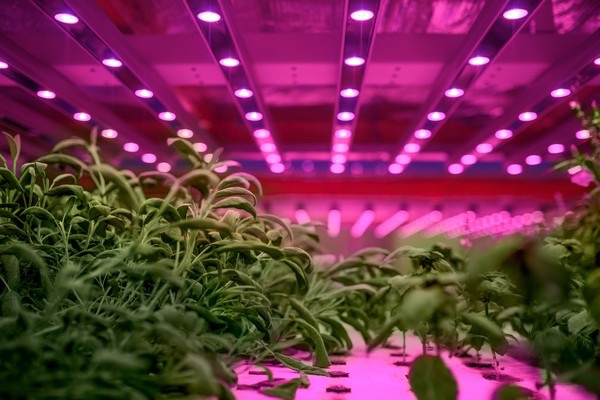“We are the first hydroponic farm in Slovakia and the first farm with a low environmental footprint,” says Filip Toška, Founder and CEO of Hausnatura, a hydroponic farm in Bratislava, Slovakia.

Filip Toška
Hausnatura began as a small aquaponic project in a basement and has evolved to leave out the fish, focusing instead on the production of leafy greens using a hydroponic system designed and built in-house. Filip ordered materials from China and figured out how to build a hydroponic system at a fraction of the cost of a turnkey system. With his background in information technologies and his continued education in automation in 2016, Filip has developed a web page from which he can automate farm operations and aggregate sensor data.
Hausnatura currently grows 11 products, including curly kale, Swiss chard, lettuce, and herbs, for direct-to-consumer sales and for local supermarket chains. The farm produces 2.200 kg per year.

Competing with 90-cent lettuce in supermarkets
As Filip explains, it is nearly impossible to compete with imported produce when it comes to price, as the combination of low production costs in countries like Spain and the incentives provided by the European Union to these growers makes it possible for a Spanish farmer to produce a head of lettuce for 40 cents and sell it for 90 cents.
“In the supermarkets, there are lettuces sold at 90 cents per head. They have traveled many food miles, and people know the quality isn’t good, but in the supermarket environment, consumers are looking first at the prices,” says Filip. “Selling lettuce at 1.50 euros won’t go well, except in a Whole Foods-type of market.”
Filip further explains that government incentives in Slovakia do very little to support indoor agriculture, focusing instead on four dominant farm types: field agriculture, greenhouses, vineyards, and hop farming.
“As an empty warehouse growing crops, we don’t fit in the main farm types, so there was no funding for us. I am now really advocating for indoor hydroponic farms to give us access to incentives, lower our production costs and make our produce more available to consumers,” says Filip.

Potential for indoor farming in Slovakia
Other than the stiff competition in supermarkets from imported produce and non-inclusive incentive programs, Filip says that the potential for indoor farming in Slovakia is limited by the size of the cities and towns in the country. In Bratislava, the capital city, the market is fairly good, and there is a trend towards a healthy lifestyle and locally produced goods. In small towns, however, people can grow their own food.
“The market in Slovakia is really small compared to the United States. We are looking to build another farm, maybe closer to Austria, to reach that market, but we need to consider the higher labor costs there,” says Filip.
According to Filip, moving beyond leafy greens production is also important as he feels growing lettuce profitably will be difficult. However, the production of cannabis could be interesting as more and more European countries legalize it.
“We need capital to be able to do more research and would love to collaborate with others who can contribute to our project,” says Filip.
 For more information:
For more information:
Filip Toška, Founder and CEO
Hausnatura
info@hausnatura.com
www.hausnatura.sk

